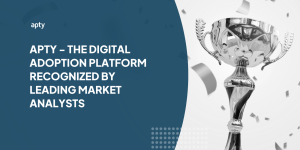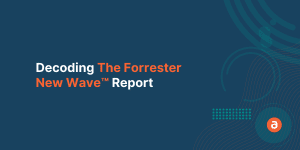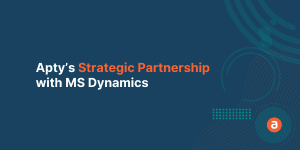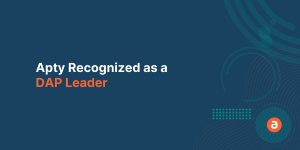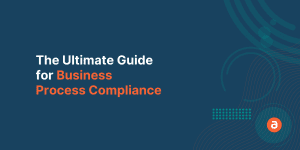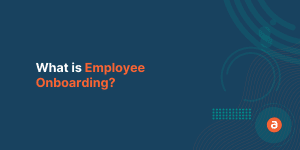Digital adoption in the healthcare sector can be more challenging than in any other industry considering the complex processes and applications that are used in the industry.
Research says healthcare spending will increase to $4.3 trillion a year by 2023. According to an IAMAI-Praxis analysis, the Indian Healthtech market will develop at a 39% CAGR to 5 billion dollars by 2023.
Dr. Taslimarif Saiyed, CEO and Director of Cellular and Molecular Platforms, stated, “Digital or tech-based healthcare was on the rise, although not in full force due to a variety of factors, including behavioral traits and budget constraints. However, the change has been expedited due to the COVID-19-led circumstances.”
CIOs are investing in the latest health technologies and other supporting software that can help them to control wastage and make the most of their investment. It helps healthcare organizations save money, but it is also beneficial for the patients to get the proper treatment at the right time and at the right price.
The current healthcare application market stands at $23.5 bn which will grow at a rate of 1.3% to reach $25 bn by 2024. It clearly indicates how important it is to leverage cutting-edge applications to enable healthcare continuity and reduce wastage across the board.
Unfortunately, the healthcare sector is unable to use these applications to their fullest potential, due to cross-department dependencies and resistance to change, leading to poor digital adoption.
You can also find this as a relevant read: What is digital adoption and why it is important?
What does Digital Adoption in Healthcare mean?
The pandemic forced many healthcare organizations to rely on digital/virtual technologies to provide patient care; this made healthcare providers switch to a more digitally enabled system versus the in-person care system we’ve been using.
Digital Adoption in healthcare means allowing healthcare providers to use the organization’s tech stack to the fullest potential and provide ultimate support to their patients.
Why are Organizations slow to adopt Digital Technologies in Healthcare?
There are a variety of reasons why healthcare organizations can be slow to adopt digital technologies. One reason is that the health care industry is highly regulated, and new technologies must often go through rigorous testing and approval processes before they can be used in clinical settings.
In addition, many health care workers are reluctant to change the way they do things and hesitant to adopt new technologies that they don’t fully understand.
Another major factor that contributes to the slow pace of digital adoption in healthcare is the fact that healthcare organizations are often large and bureaucratic, with multiple layers of management and decision-makers. This can lead to delays in adopting new technologies, as well as a lack of support for initiatives from top-level executives.
Potential reasons why organizations are slow to adopt digital technologies in healthcare include:
- Lacking a clear picture of what success looks like.
- Increased costs and decreased access.
- Systems that are incapable of running cybersecurity programs.
- The difficulty of understanding information being shared digitally.
The Current State of Healthcare

EHRs (Electronic Health Records) which is also known as EMR (Electronic Medical Record) have become an integral part of the US healthcare system. Since 2009, because of government subsidies, EMR adoption was made possible.
While the early adopters were able to optimize it and use it efficiently, the more recent adopters are still playing catch up.
In theory, these electronic records appear to be easy-to-use and feel like they would make the life of the healthcare providers easy. But in reality, it consumes a lot of time which could be frustrating for users.
It is hard to find a provider who enjoys taking care of EMR documentation as it is a tedious job. This results in erroneous data which could impact patients negatively in the long run and the kind of treatment they receive.
The main goal of the EMR is to make patients’ health data available to the providers and also to solve the payment issues between providers, payers, and hospitals.
Most of the EMR software providers are doing a decent job but unfortunately, the information fields are being auto-populated which can pose huge risks for health providers if a regulatory audit is conducted.
Auto populated field is not ideal if it is not in accordance with state and federal regulations. For instance, if there is a difference of over $1 million in the system because of these errors then the health provider is responsible and not the EMR provider.
However, providers are getting smart and utilizing supporting software like Digital Adoption Platform that helps their employees to be compliant while filling the forms and in accordance with the standard regulations.
A Digital Adoption Platform helps the employees to identify the fields that are mandatory to fill and it takes them from one field to the other seamlessly. The employee will not be allowed to move to the next field or submit the form unless they follow the correct format while entering the data.
Interoperability is Key to Improve

Interoperability is the ability of a variety of healthcare applications to exchange, interpret, and use data cohesively.
The main goal of interoperability is the patient’s health and safety, followed by patient experience, and improved care coordination.
Interoperability is important in a world where people use multiple applications to execute their day-to-day tasks.
It has become common for most people to leverage consumer care applications to monitor their daily health and these applications regularly track important health vitals.
Now we are in a place where the consumer care that is related to daily health and fitness is getting closer to clinical care.
The data collected by the consumer care apps are important for these clinical care providers to make decisions and understand where the patient might have faced issues. It gives them an idea about the history and provides them with the trend.
To do it efficiently, both these segments have to exchange data to provide a more personalized experience to the patient at the right time. Unfortunately, it is not happening seamlessly.
According to the National Coordination for Health Information and Technology, only 46% percent of the hospitals have patient data at the point of care.
Another study conducted by John Hopkins reveals 44% of medical error death could have been prevented provided the right patient data was available.
We can conclude that the right data is not available in most cases and this leads to deaths that could have been avoided.
Well, it can be avoided if the healthcare staff are familiar with the applications that are cross-dependent. Learning how each application is dependent on another will give the Healthcare staff an idea of how to leverage these applications or platforms.
Since data can be the deciding factor between life and death, it is necessary for the staff to not only enter the proper data in these applications but also to interpret these data points to their advantage to provide better treatment.
It can be done by using tools like Digital Adoption Platform that empowers your employees to use any application properly and use other dependent applications without any prior knowledge.
Efforts like these could help the healthcare sector save as much as $30 billion a year.
Digital Adoption Platform is Vital for Success

It could be overwhelming to use any type of heath application for the medical staff especially if they do not have any prior training.
Regardless of where the medical staff is in their training journey, a Digital Adoption Platform like Apty ensures that your employees are guided within the application from one step to another seamlessly.
What sets it apart is its capability to analyze and process application data to give you insights regarding how the users are utilizing any healthcare application.
You can set the definition of completion and micro-objectives that a user has to complete to get the basic knowledge of the application.
Since we already established that how crucial data integrity is, a Digital Adoption Platform helps you to achieve just that as it will not allow the users to enter the data in an invalid format.
Applications like EMR are complicated and their interface is not intuitive, forcing users to spend a lot of their precious time on them. Further, users could also get stuck in the feature hell and eventually, succumb to digital fatigue.
A Digital Adoption Platform helps to counter digital fatigue as it empowers them with on-screen guidance and automation so that they can focus on their actual job rather than worrying about mundane, repetitive tasks.
When it comes to the patient, filling out their data should be minimal and easy. Sometimes this process can frustrate the patient which results in them missing field or in some cases, abandoning the form altogether.
Even here, a Digital Adoption Platform can guide the patients in a handheld manner which do not need a third-person intervention or support.
The Digital Adoption Platform like Apty will help you to identify the pain points of the patients while using the application and you can improve the workflows to encourage form completion to get relevant data.
Make Most of Your Current Healthcare Infrastructure
When EMR and other supporting applications are utilized correctly it could help you save a lot of lives by reducing the overall expenditure.
Attaining it will be beneficial for the patients, payers, and providers but it is not possible to achieve it without a Digital Adoption Platform like Apty.

